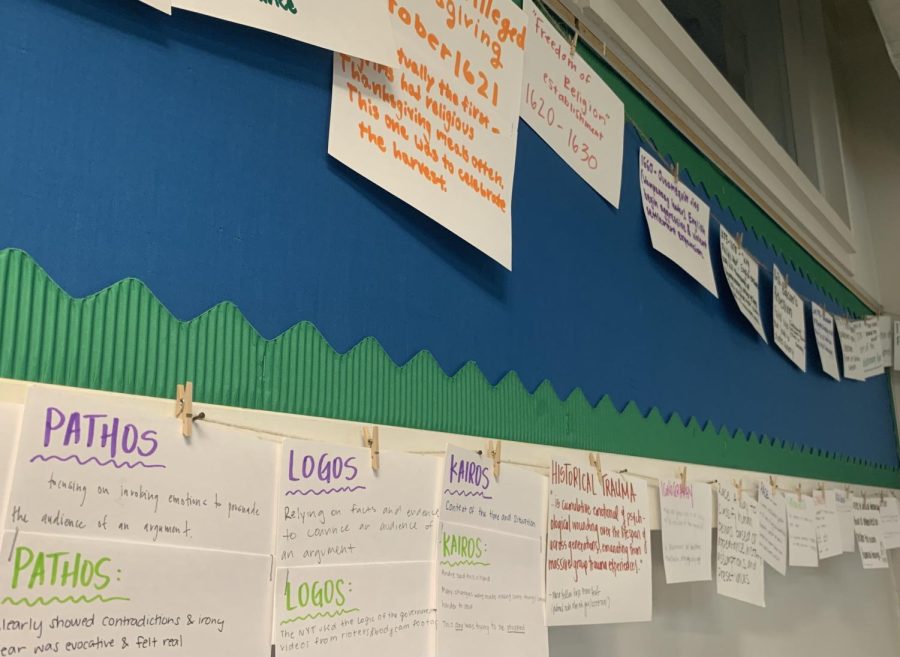Advanced Placement, honors, and regular courses: these are the typical options a high school student will examine when building their schedule for a new school year. A student looking for rigor in their schedule will turn first to Advanced Placement (AP) courses, standardized by the College Board and self-described as “college-level” academic experiences. Next come honors options, usually intended to cover more content or incorporate more detail than their regular counterparts. These “normal” courses, meant to be less fast-paced or complex than AP and honors, complete the list of choices considered by most students.
These choices, while distinguished from one another by differences in curriculum or speed, are all characterized by their adherence to a traditional philosophy of education. Teachers teach the content of the course and students process it enough to regurgitate what they’ve learned for a test or other assessment, just in time to rinse and repeat for the next chapter or unit. (Educator-philosopher Paulo Friere describes and criticizes this “banking model of education” in his 1968 text Pedagogy of the Oppressed.) Synthesis of information by students in these courses tends to take the form of study guides and mnemonic devices. Understanding of information, and the knowledge of the world brought by that understanding, are most valued when they help the student to memorize events or formulas or whatever the next test might focus on. Shouldn’t it be the other way around?
Traditional classes aren’t all bad. Some are enjoyable and engaging. Most are delivered by hard-working, well-intentioned teachers. Almost all are reasonably effective and efficient at teaching the content they’re intended to teach. With few exceptions, a student who takes algebra and trigonometry will learn to factor and memorize the unit circle; a student in honors Spanish will improve their vocabulary and grammar; an AP United States History student will learn about events and concepts in the history of the United States. But that’s not enough.
The world today is characterized by rapidly shifting and collapsing systems. Our ecological, social, political, and economic realities are vastly different now than they were a decade, a year, or even a week ago. The set of tools that today’s students will need to survive, thrive, and help others in the years to come isn’t going to be found in a textbook. You can’t memorize how to think critically or collaborate. There’s no mnemonic for answering complex questions about nuance and justice.
So if our traditional methods of teaching and learning can’t adequately prepare us for life in the real world, what’s the solution? What type of class is structured around applying learned knowledge in real-world situations, collaborating in groups, recognizing nuances and making connections across traditionally separate areas of study? That last point offers a hint: interdisciplinary courses provide all these things. Where a traditional curriculum asks questions in order to answer them, an interdisciplinary one asks questions in order to prompt learning, new understandings, and action. Where students in a traditional class might have to prioritize remaining within the scope of the course over following their related interests, in an interdisciplinary course those interests tend to be the driving force behind the learning process.
Interdisciplinary courses take a variety of forms. Many are explicitly interdisciplinary, often designed to give academic credit in two or more areas. While these may be the only options to be flagged in the course catalog or the student transcript as interdisciplinary, they aren’t necessarily the only interdisciplinary offerings. Courses that give credit within one traditional discipline might still take an interdisciplinary perspective in some way, as signified by titles like European History Through Philosophy or Culinary Chemistry. Independent study options might also provide opportunities to cross disciplinary boundaries. Even some Advanced Placement courses, while limited by the goal of preparing students for an exam, have distinctly cross-disciplinary aspects – AP Environmental Science and AP Human Geography are two classic examples. The list of interdisciplinary opportunities is long and constantly growing.
While interdisciplinary status isn’t a guarantee that a class will be academically useful and engaging, the odds are good. Removing the divide between the course and the real world makes the classroom walls feel less confining and more supportive. Replacing memorization with discussion and collaboration helps students to really understand the course material. Independent projects, used in place of traditional assessments, provide practical skills and knowledge that can’t easily be gained from the rote learning those assessments require. In concrete and practical ways, interdisciplinary courses are a superior way for students to learn and to prepare for what comes next: college, careers, and life in a rapidly changing world.
All the more tragic, then, that interdisciplinary choices are often overshadowed by their more traditional counterparts. Many students (and parents of students, as well as teachers and college counselors) believe that taking Advanced Placement and honors courses will give them an edge in college admissions, while interdisciplinary courses will not. While certain colleges do prefer that a student take traditional courses rather than interdisciplinary ones, holistic review processes and shifting educational norms make interdisciplinary courses a viable choice for most students, potentially the best possible choice for many. All the skills listed above as interdisciplinary benefits – collaboration, critical thinking, synthesis and application of knowledge, engagement with nuanced concepts, interdisciplinary learning itself – are things that colleges are actively looking for in their prospective students.
So this is a message to the passionate students, the ones who care deeply, the ones who want something from the world and who want the world to be different than it is. It’s a message to the engaged students and the students who haven’t found a way to engage, to the ones who can’t easily memorize lists of facts and the ones who can but are always left wishing for something more. It’s a message to the students learning so they can go to college and the students learning so they can go to work and the students who are learning because they just want to know. It’s a message to those students’ parents, their teachers, their college counselors and school administrators, and even to college admission officers. The message is simple. For a thorough, challenging, supportive, practical, beneficial, useful education – for the kind of education the world needs more of – for a rigorous education, choose interdisciplinary courses.


